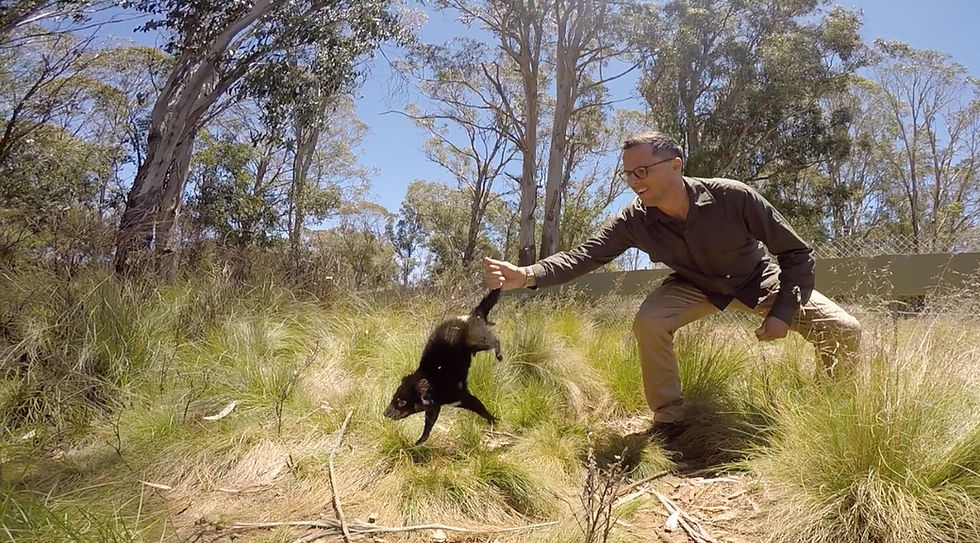#FloraAndFaunaFriday: Better The Devil You Know
- Gregory Andrews

- Aug 15
- 2 min read
OK, so this is one of my favourite photos from my time as Australia’s Threatened Species Commissioner. In 2014, I visited Aussie Ark on Wonnarua Country in NSW's Barrington Tops. And there, I was lucky to release a healthy, facial tumour-free Tasmanian Devil.
Yes, I did hold it by its tail! Because they have very sharp teeth. But I also learned three things I’ve never forgotten.
First, Devils aren’t actually Tasmanian. At least, not originally. While they’re now confined to Lutruwita Tasmania, they used to roam on mainland Australia too. They likely disappeared from the mainland around 3,000 years ago, most probably due to the arrival of dingoes which naturalised on the mainland but never reached Tasmania.
Second, Devils play a crucial role as apex predators and ecological vacuum cleaners. They eat carrion and clean up diseased carcasses. There’s even support from Traditional Custodians for their reintroduction back to mainland Australia because of their potential benefits to biodiversity. With careful planning and Indigenous inclusion and leadership, this could be an exciting opportunity to restore balance.
Third, the facial tumour disease that is pushing them towards extinction was triggered by habitat fragmentation which caused population bottlenecks and genetic inbreeding. It’s a transmissible cancer - one of the few in the world. And it has spread rapidly due to the lack of genetic diversity and rigour in Devil populations.
That brings me to now. The Devil is officially Endangered on both the EPBC Act and IUCN Red Lists. Wild populations have declined by over 80% in the past two decades. The disease is a major threat to their survival.
But it’s not all bad news. Disease-free insurance programs like the one at Aussie Ark, and scientific efforts in Tasmania are helping to build a genetically diverse insurance population. Scientists are also working on a vaccine and immunotherapy approaches to help Devils develop resistance to the disease.
The Devil's story is one of loss, resilience, and the power of creative conservation grounded in Country and science. It's also a reminder of how important habitat connectivity and genetic diversity are in preventing extinction - for Devils and all Australian species.




Rewilding can help our Aussie animals compete with the ferals.
Hoping much more can be done to protect our unique Wildlife 🙏
Well done, Greg! Australia is a first-world nation. Yet, here we are, listed as the third worst for threatened species facing extinction. Inadequate environmental protection laws and mass habitat loss are direct causes of this critical situation. Australia needs to lift our game in conservation of wildlife species and biodiversity.